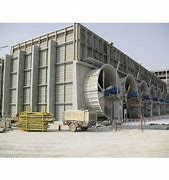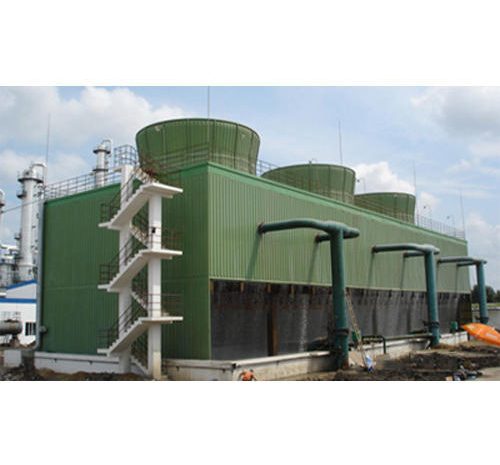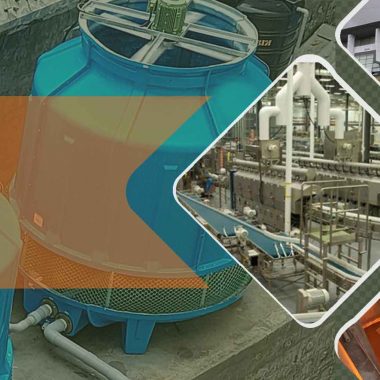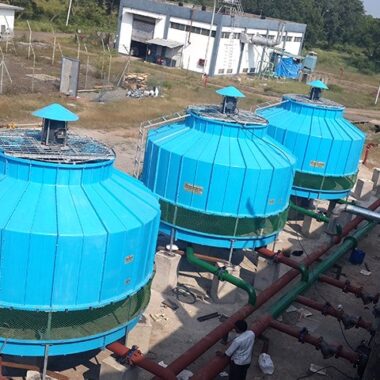What is Cooling Tower?
What is Cooling Tower?
An expert heat exchanger known as a cooling tower uses air and water in close proximity to each other to lower the temperature of the water. A little amount of water evaporates during this process, bringing the temperature of the water flowing through the tower down.

Process Explanation
Pipes are used to pump heated water to the tower from an industrial process or an air conditioner condenser. In order to restrict the flow of water through the cooling tower. It expose as much water surface area as possible for maximum air-water interaction. The water is sprayed through nozzles onto banks of material known as fill. The cooling tower’s electric motor-driven fan draws air through the tower, exposing the water to the air as it passes through.
A small amount of water evaporates when water and air come together, cooling the environment. After cooling, the water is pumped back to the condenser or other process machinery to absorb heat. Then, it will be pumped back to the tower to undergo another cooling process. For those who wish to study more, Cooling Tower Fundamentals is a fantastic resource. It offers a degree of fundamental understanding of cooling towers.
Cross flow Cooling Towers
In crossflow cooling towers, the air travels across the flow of the falling water as the water falls vertically through the fill.
The use of gravity flow hot water distribution basins located at the top of the unit above the fill is made possible because air is not required to travel through the distribution system.
Counter flow Cooling Towers
The design of counter flow ensures that air moves vertically upward in opposition to the fill’s downward water flow.
The open, gravity-flow basins that are typical of crossflow designs cannot be used because of this vertical airflow. Instead, water is sprayed onto the top of the fill using pressured, pipe-type spray systems in counter flow towers.





Cooling Towers Fills - Cool Fab Equipments December 22, 2023 at 4:26 pm
[…] cooling towers fills! They’re the unsung heroes of the cooling tower world, silently boosting performance and efficiency. To answer your question, I need a bit more […]